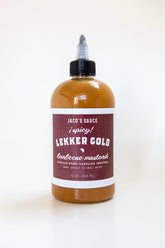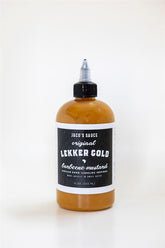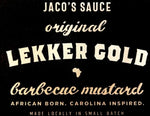Yes, you can freeze cooked ribs! Freezing leftover ribs is a great way to save those tasty extras for another day. Whether you made too many for your weekend cookout or want to prep meals ahead, properly storing your cooked ribs in the freezer can help you enjoy them later without wasting food. The key is knowing how to freeze them right to keep them tasting good when you're ready to eat them again.
How Long Can You Store Frozen Cooked Ribs
According to food safety experts, frozen cooked ribs will stay at their best quality for about 2-3 months in the freezer. They're still safe to eat after this time, but their taste and texture might start to change.
To compare, ribs only last about 3-4 days when stored in the fridge. Freezing gives you much more time to enjoy them before they go bad.
Even though frozen ribs stay safe almost indefinitely at 0°F, their quality will slowly decline the longer they sit in the freezer. After 3 months, you might notice signs of freezer burn – dry, discolored patches that affect the taste and texture.
Keep in mind that these timeframes assume you're storing the ribs properly (which we'll get to next). Poor wrapping can lead to faster freezer burn and quality loss.
According to the USDA, cooked meat retains its best texture for up to 3 months in the freezer.
Benefits of Freezing Cooked Ribs
Freezing your leftover ribs comes with lots of perks. First off, you'll cut down on food waste. We've all been there – cooking more food than we can eat in one sitting. Instead of throwing away those extra ribs, pop them in the freezer!
Another big plus is having quick meals ready to go. After a long day when you don't feel like cooking, you can grab those frozen ribs, warm them up, and dinner is done. This is super handy for busy weeknights.
You'll also save money by freezing leftover ribs. Rather than buying new ingredients or ordering takeout, you can use what you already have. Plus, you can take advantage of sales by cooking larger batches and freezing portions for later.
Freezing also stretches the life of your ribs way past what you'd get in the fridge. While refrigerated ribs might last 3-4 days, properly frozen ribs can stay good for months.
How to Properly Freeze Cooked Ribs
To keep your ribs tasting great after freezing, you need to follow the right steps. Let's break it down into stages to make sure your ribs freeze perfectly.
Preparing Ribs for Freezing
Before you wrap up those ribs, you need to cool them properly. Never put hot food straight into the freezer! This can raise the temperature inside your freezer, potentially thawing other foods and creating safety risks.
Let your ribs cool at room temperature for about 30 minutes, but no longer than 2 hours (for food safety). For faster cooling, place them on a cooling rack so air can circulate all around.
Once cooled, think about how you'll use the ribs later. Cutting them into meal-sized portions makes things much easier. This way, you only need to thaw what you plan to eat, keeping the rest safely frozen. For example, if you usually eat 3-4 ribs per person, package them in these amounts.
Wrapping and Packaging Methods
How you wrap your ribs makes a big difference in how well they keep. Your main goal is to keep air away from the meat, as oxygen causes freezer burn and quality loss.
For the best results, try these methods:
- Double wrapping: First wrap tightly in plastic wrap, then add a layer of aluminum foil. This gives double protection against air.
- Freezer bags: Press out as much air as possible before sealing. Some people use a straw to suck out the remaining air.
- Vacuum sealing: If you have a vacuum sealer, this is the best option. It removes all air and creates a perfect seal.
- Airtight containers: These work well for ribs with sauce but leave some headspace for expansion.
Whichever method you choose, always label your packages with the date and contents. You might think you'll remember, but after a few weeks in the freezer, everything starts to look the same!
Looking for something amazing to put on those ribs? Jaco's Sauce Lekker Gold is the perfect mustard BBQ sauce that brings the perfect South Carolina flavor to your table. Whether you're freezing ribs with sauce or adding it after reheating, this small-batch, artisanal sauce adds that special touch that turns ordinary ribs into a memorable meal.
Try Jaco's Sauce for your next cookout experience!
Best Practices for Freezing Different Types of Ribs
Not all ribs freeze the same way. The type of ribs and how they're prepared can affect how well they hold up in the freezer.
- Baby back ribs tend to freeze well because they're leaner. With less fat, they're less prone to developing rancid flavors over time.
- Beef ribs have more fat content than pork ribs, which can be both good and bad. The fat helps keep them moist during reheating, but it can also go rancid faster in the freezer.
- Spare ribs and St. Louis-style ribs have more fat and connective tissue. They freeze well but might need more careful reheating to keep them tender.
How you cooked your ribs originally also matters. Smoked ribs tend to keep their flavor better in the freezer than oven-baked ones. The smoke acts as a natural preservative and flavor protector.
Freezing Ribs with Sauce vs. Without
Should you freeze ribs with sauce already on them? This depends on the sauce and your preferences.
Freezing with sauce:
- Keeps the meat moist during storage
- Saves time when reheating
- Works best with homemade sauces without dairy
Freezing without sauce:
- Gives you flexibility to use different sauces later
- Better for tomato-based sauces, which can separate when frozen
- Often results in better texture after reheating
If your ribs have a vinegar-based sauce, they'll usually freeze well with the sauce on. However, thick, sweet tomato-based BBQ sauces might change texture after freezing and thawing.
For the best results with sauced ribs, consider setting aside some extra sauce to add fresh after reheating.
Quality Considerations After Freezing
Let's be real - frozen and reheated ribs won't be exactly like freshly made ones. But with proper handling, they can still be really good.
After freezing, you might notice some texture changes. The meat might be slightly less juicy, and the outside might not be as crisp. This happens because freezing causes tiny ice crystals to form, which can damage the meat's cell structure.
Flavor-wise, properly frozen ribs should still taste good, though some of the more subtle flavors might be less noticeable. Adding fresh sauce during reheating can help boost the flavor.
To keep the best quality:
- Wrap ribs extremely well before freezing
- Don't keep them frozen longer than 3 months
- Avoid repeated freezing and thawing
- Reheat them gently with added moisture
Thawing Frozen Ribs
Thaw ribs safely to avoid bacteria growth.
Safe Thawing Methods
- Refrigerator : Thaw overnight (best method).
- Cold Water Bath : Submerge the sealed bag in cold water for 2-3 hours.
- Microwave : Use the defrost setting, then cook immediately.
Avoid : Leaving ribs on the counter—room temperature breeds bacteria.
Reheating Frozen Ribs
Bring back that fresh-off-the-grill taste with these methods.
Oven Method
- Preheat the oven to 275°F (135°C).
- Place ribs on a baking sheet.
- Cover with foil and heat for 20-30 minutes.
Grill or Stovetop
- Grill over medium heat for 10-15 minutes.
- Add a splash of water or broth to keep them moist.
Microwave Hack
Wrap ribs in a damp paper towel and microwave in 30-second bursts.
For extra flavor, brush ribs with Jaco Sauce Lekker Gold while reheating. Its tangy mustard BBQ base adds a punch of flavor to thawed ribs!
Signs of Spoilage in Frozen Ribs
Even frozen ribs can go bad eventually. Here's how to tell if your frozen ribs should be tossed:
Severe freezer burn looks like white, leathery, dried-out patches on the meat. While not dangerous, heavily freezer-burned ribs will be dry and tasteless.
Off odors are a major red flag. If your thawed ribs smell sour, rancid, or just off, don't risk eating them.
Unusual discoloration beyond the grayish color that meat sometimes gets when frozen could indicate spoilage. Green, black, or very dark spots are bad news.
Slimy texture after thawing means bacteria have started breaking down the meat. This is a clear sign to throw them out.
Ice crystals inside the packaging aren't themselves a sign of spoilage, but they show that the ribs have probably been through temperature fluctuations, which can affect quality.
When in doubt, remember the food safety saying: When in doubt, throw it out. It's better to waste food than risk getting sick.
FAQs About Freezing Cooked Ribs
Can I refreeze ribs that have been thawed? It's not ideal. Refreezing can further damage the texture and increases food safety risks. Only refreeze if they were thawed in the refrigerator and haven't been at room temperature for more than 2 hours.
Can I freeze store-bought pre-cooked ribs? Yes, the same freezing methods work for store-bought cooked ribs. Check the packaging first, as they may already have been frozen once.
Can I freeze ribs from restaurants? Yes, but try to freeze them as soon as possible after getting home. Restaurant leftovers have already spent some time in the food safety danger zone.
Do I need to remove the bones before freezing? No, you can freeze ribs with the bones intact. In fact, the bones can help protect the meat and add flavor during reheating.
How can I prevent freezer burn on my ribs? Wrapping tightly to remove all air is the best prevention. Double-wrapping or vacuum sealing works best.
Can I cook ribs directly from frozen? It's not recommended. Cooking from frozen can result in uneven heating. Always thaw first for best results and food safety.
Will the sauce on my ribs survive freezing well? Most sauces freeze okay, but some may separate or change texture. Tomato-based sauces sometimes become watery after thawing.
Conclusion
Freezing cooked ribs is definitely worth doing when you want to save leftovers or prep meals ahead. With the right wrapping and proper thawing methods, you can enjoy your ribs weeks or even months later.
Remember the basics: cool before freezing, wrap tightly to keep air out, freeze in portions, and label with dates. When it's time to enjoy them, thaw safely and reheat with a little added moisture.
While frozen and reheated ribs might not be identical to fresh ones, they'll still make for a tasty meal. And if the texture isn't perfect, you can always transform them into sandwiches, tacos, or other dishes.
By mastering the art of freezing cooked ribs, you'll save money, reduce food waste, and have delicious meals ready when you need them most. So go ahead and freeze those leftover ribs – your future hungry self will thank you!











